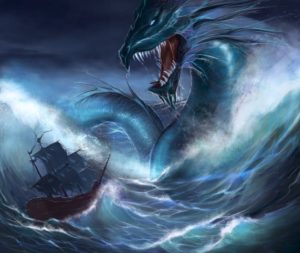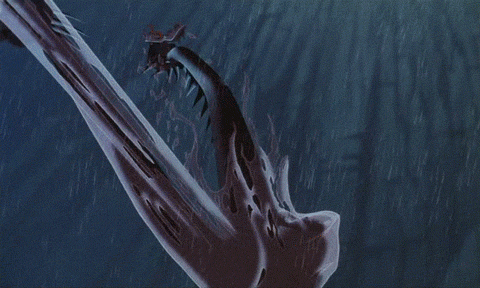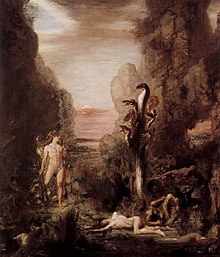


Rough Notes:
Hydra (mythology)

Herakles and the Lernaean Hydra, Attic Vase, around 540/30 BC; Musée du Louvre, Paris

Gustave Moreau: Herakles and the Lernaean Hydra, 1876
In Greek mythology the Hydra, which was also called Lernaean Hydra, is a serpent-like monster. According to Theogony313, the hydra is the child of Typhon and Echidna. Hercules, or Heracles in Greek mythology, kills the Hydra as one of his Labors. The Hydra lived in the lake of Lerna in the Argolid. The lake itself is older even than the Mycenean city of Argos. Lerna was the site of the myth of the Danaids, too. The Hydra is a nine-headed serpent like snake. It was said that if you cut off one hydra head, two more grow back.
The second of the 12 labors of Hercules was to kill the Hydra. The Lernaean Hydra had nine heads, which, however, when cut off, two more grew in its place. The monster also had one immortal head that was in the middle. All of the heads could spit deadly acid as well. To defeat the Hydra, Hercules called on his friend Iolaus for help. As soon as Hercules cut off one head, Iolaus would seal the wound with a red hot poker so that nothing could grow to replace it. After removing the Hydra's immortal head, Hercules buried it under a large rock. He then collected the monster's poisonous blood. In later adventures, he dipped his arrows in the blood so that they would instantly kill whomever they struck.
References[change | change source]
- Graves, Robert (1960), The Greek Myths, Penguin Books, pp. 469–72
- "Hydra." Myths and Legends of the World. 2001. Encyclopedia.com. 11 Apr. 2016<http://www.encyclopedia.com>